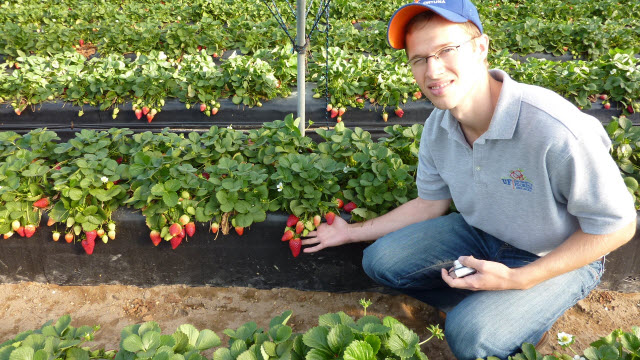Scientists: Commercially Grown Strawberries Are Not Genetically Engineered
Commercially grown strawberries worldwide do not use such techniques in new variety production at this time, UF/IFAS researchers stress
 University of Florida Institute of Food and Agricultural Sciences researchers get this question a lot: Are your strawberries genetically modified? The emphatic answer is “no.” In fact, they’ve written an Extension document that explains to the public how UF/IFAS scientists breed strawberries for commercial production. Indeed, commercially grown strawberries worldwide do not use such techniques in new variety production at this time.Photo credit: Credit: UF/IFAS file
University of Florida Institute of Food and Agricultural Sciences researchers get this question a lot: Are your strawberries genetically modified? The emphatic answer is “no.” In fact, they’ve written an Extension document that explains to the public how UF/IFAS scientists breed strawberries for commercial production. Indeed, commercially grown strawberries worldwide do not use such techniques in new variety production at this time.Photo credit: Credit: UF/IFAS file
BALM, Fla. — University of Florida Institute of Food and Agricultural Sciences researchers want the public to know that they do not use genetic engineering to breed commercial strawberries; in fact, commercially grown strawberries worldwide do not use such techniques in new variety production at this time.
A UF/IFAS strawberry breeder says he’s often asked whether the fruit is genetically engineered, or as some put it, “genetically modified.”
“In recent years I have been frequently contacted by the public with questions about genetic engineering, and Florida strawberry growers have frequently reached out to me to help answer questions they have received from the public as well,” said Vance Whitaker, a UF/IFAS associate professor of horticultural sciences and a strawberry breeder.
Whitaker co-authored a new UF/IFAS Extension document, http://bit.ly/2gZQzhq, in which he and UF/IFAS assistant professor Seonghee Lee describe how UF/IFAS scientists breed commercially grown strawberries for Florida growers and other markets.
Strawberries are a $300 million-a-year industry in Florida, and most are grown in Central Florida, more specifically, in Hillsborough County.
The UF/IFAS strawberry breeding program has been developing strawberry varieties for nearly 70 years, Whitaker said. The strawberries are developed using a conventional breeding process of selecting seedlings, which later become new parents for the next cycle of crossing, said Lee, a UF/IFAS assistant professor of strawberry molecular genetics and genomics.
UF/IFAS breeders do not use genetic engineering technologies to improve strawberries.
UF/IFAS scientists breed varieties to adapt to the weather, soils and growing practices in Central Florida and other strawberry production regions around the world. These varieties, such as ‘Florida Radiance’ and Sweet Sensation® ‘Florida127’ combine high yield and disease resistance with excellent flavor and shelf life, Whitaker said.
“As we continue to find more precise and creative ways to breed strawberries, we hope to develop strawberry varieties that perform better for the farmer, taste better for the consumer and have increased disease resistance, making them healthier overall,” said Lee, who works with Whitaker at the UF/IFAS Gulf Coast Research and Education Center in Balm, Florida.
